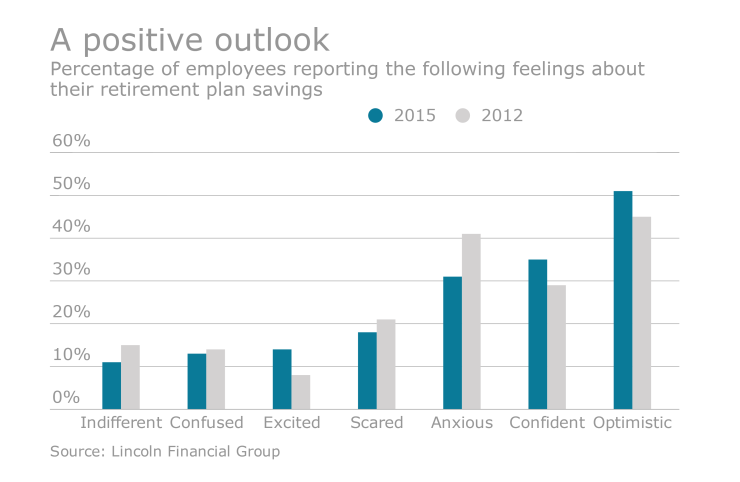A strong retirement savings benefit with a match has always been part of a competitive benefits package.
Now, employers need to pay attention to growing retirement trends — such as auto-enrollment and -escalation, in-plan conversions, fee equalization and custom target date funds — to attract prospective workers and retain employees and, of course, help them boost savings.
For

“Participation was at 71% when I joined [in 2009]; now it’s at 93%,” she said Tuesday at Employee Benefit News’ Benefits Forum & Expo in Boca Raton, Fla. “We want to make sure people are automatically saving [and] give them the levers they can pull to do what’s right for them.”
The global content delivery network service provider sets the 401(k)-contribution default to 8% to make sure employees are maximizing the company’s match, along with
Global biopharmaceutical company Stallergenes Greer, which has offices in London and Cambridge, Mass., also found that it wasn’t maximizing out its auto-enrollment, said Greg Limoges, Stallergenes Greer’s vice president of people, operations, services and programs.
The company began to transition people to enroll at its match and take advantage of contributions, but opted against auto-escalation because its large manufacturing employee base did not have salaries
Don Powers, managing consultant of compliance and consulting at the PFE Group, added that employees are able to improve their retirement vehicles, along with that of their companies, whether that’s helping their companies’ plans become destinations or facilitating in-plan conversions.
“We have done everything we can to make our plan a destination of choice,” Limoges said. “We want to capture as many rollover dollars. We really encourage rollovers to make our plan a destination choice.”
See also:
Powers also suggested that employers look at their agreements with their record keepers, who are beginning to move their rates to fixed fees.
“It’s a great trend,” he said. “The basis points should not just go through the roof.”
In that vein, in-plan conversions can help employees improve their overall finances by paying taxes during an off-year rather than when they cash out of their 401(k) plans, the experts said. Still, that requires an effective communication strategy to let employees know that is an option within their retirement savings benefit.
Another retirement trend that hinges on employee education is the structure of the company’s 401(k) plan design and determining the risk tolerance levels of the employee base. Some employees might want to be enrolled in a target date fund account or a model that is reflective of an individual employee’s risk tolerance.
The panel of benefit experts urged the audience to stick with the off-the-shelves target date funds rather than the white-label options because it could open employers up to a lawsuit.
“If you go and build custom target dates [and] have an off-year like Intel did, you’ll get sued,” Powers said.
While Intel won against that lawsuit, the multinational technology still had to defend its decision, he added.
Another segment of the workforce will want to take greater control of their retirement savings, whether that’s through active or passive investing. The solution, the experts said, is to offer both.
“Have some active managers and some passive managers and let the participants choose,” Powers said. “You’re not trying to win that battle.”
Employees also are increasingly asking for socially-conscious plans, which present a challenge for plan sponsors.
Some employers will not go down the path of having its committee determine which assets are socially conscious, especially as that varies person-to-person. Other companies, such as Akamai, point employees to a self-directed brokerage for making those 401(k) changes.
“Our fiduciary responsibility is to offer prudent advice,” Sardella said. “These socially responsible funds come at a premium.”





